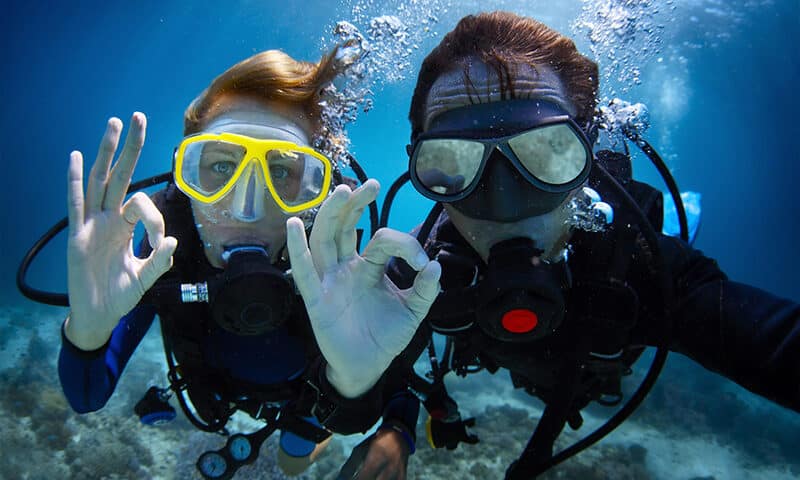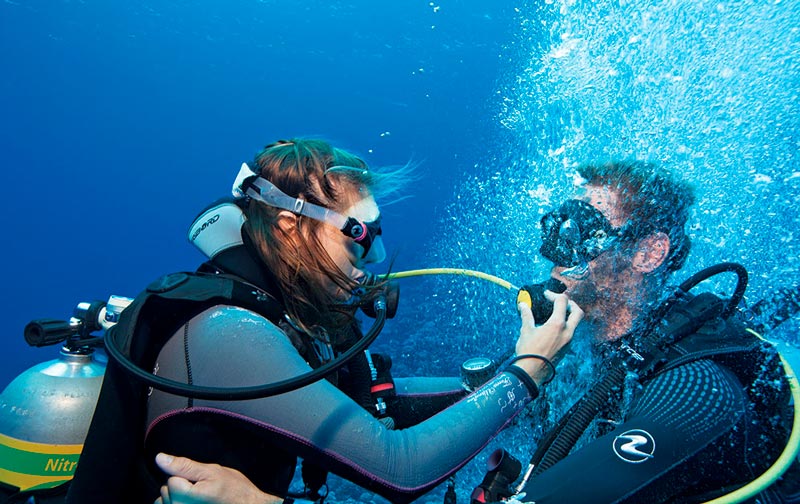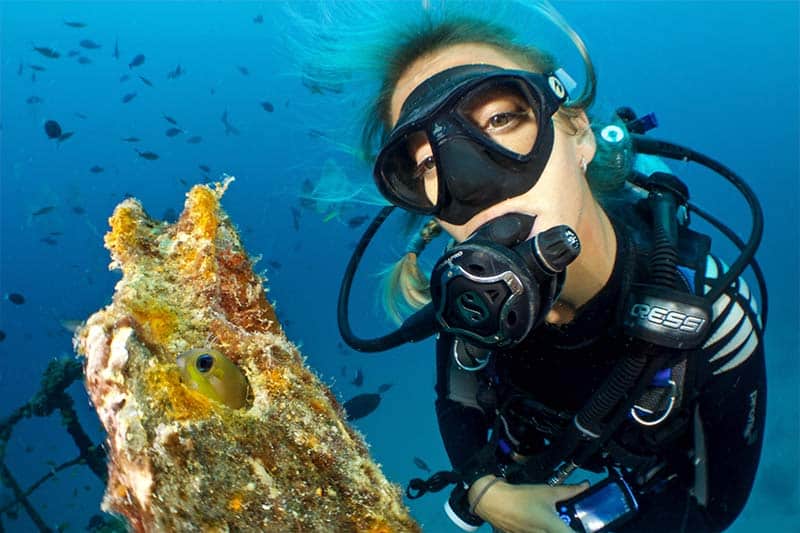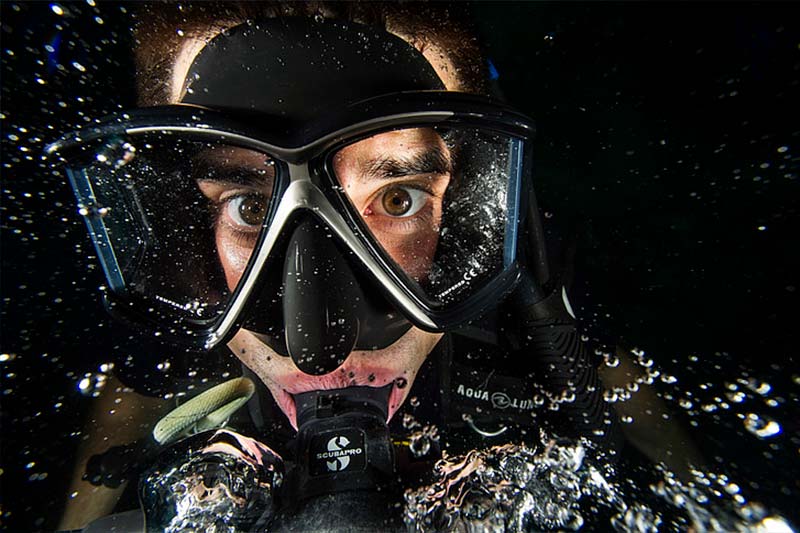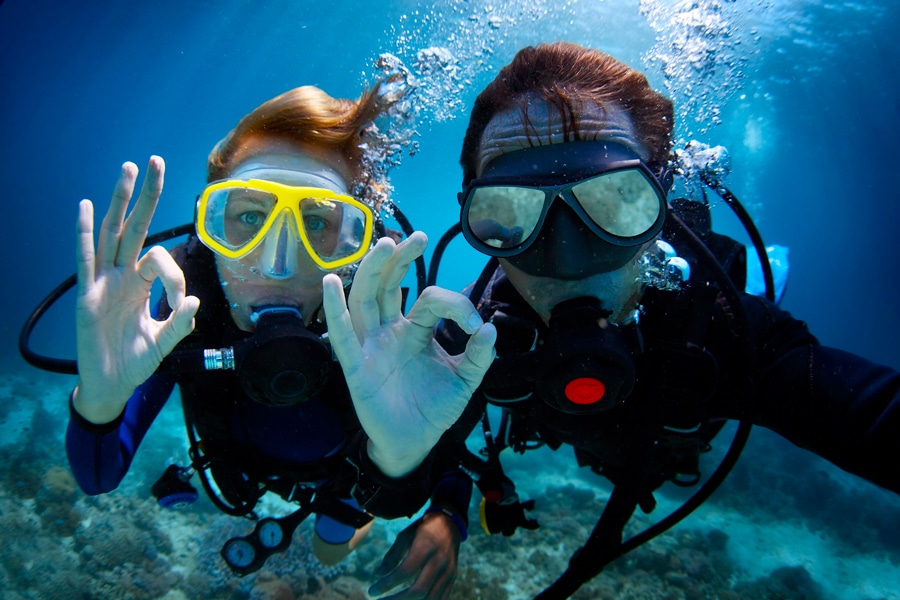2. Learning to Breathe Underwater for Better Diving
2.1. Why Proper Breathing During Diving Is Important
Breathing is key, whether on land or beneath the waves. Breathing underwater is not just about survival; it’s about maintaining calm and balance. And you know what? Diving teaches us a life lesson in that.
When we’re in the water, our bodies move up and down just by breathing. It affects buoyancy to that extent! Taking a deep breath underwater when you’re not supposed to can unexpectedly take you upwards, and that’s not as fun as it sounds. Rapid breathing stresses you out, and stress makes you use more air. But when you breathe well… When you breathe well underwater, you can see your worries ascending in the bubbles you exhale!
The fact is, with your underwater breathing, you’ll:
- Influence your air consumption.
- Control buoyancy.
2.2. The Basics of Diving
When breathing underwater, everything seems to flow. It’s effortless; air flows in, filling your mouthpiece with a feeling of abundance. If it doesn’t, something’s off. That’s why it’s crucial to check that the SCUBA gear functions properly before submerging and that the tank is charged and open. Also, regularly check the regulator during the dive to see how much air you have left.
2.3. First Rule: Never Stop Breathing
Underwater breathing is like a conscious dance, an uninterrupted, smooth and continuous experience. Maintaining that steady flow isn’t just for safety but also for air efficiency. We explain this in the article ” 10 Scuba Tech Tips to Improve Your Diving Air Consumption”.
2.4. Second Rule: Breathe Slow and Deep
A common mistake most beginners make when breathing underwater is taking short, shallow breaths.
If you do this, you’re wasting your tank’s air. Instead, focus on slow, deep breaths to maximize air efficiency and stay underwater longer.
This breathing style is a wonder for optimizing your air consumption. Gas exchange becomes more efficient when you exhale air slowly. Our bodies and minds thrive on constant oxygen to stay in good shape. And believe me, balancing inhalations and exhalations will give you control in the water and the serenity you need. Besides, that slow, deep breathing is like a balm for the soul.




